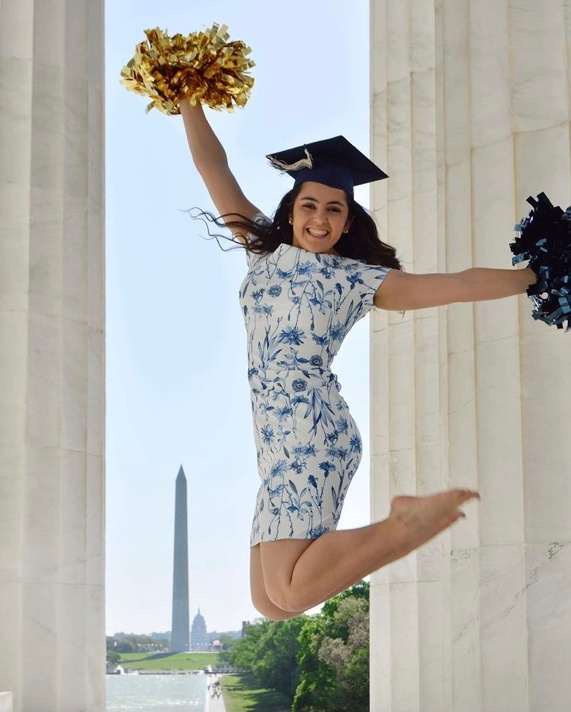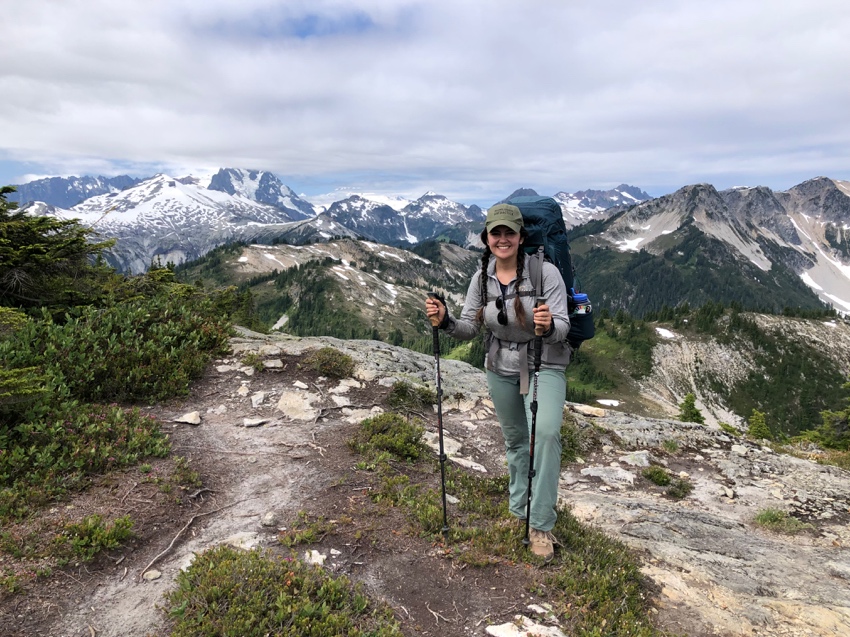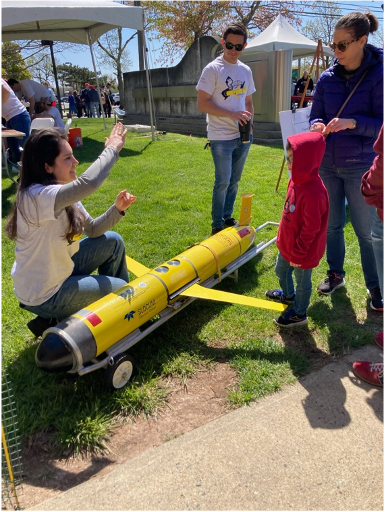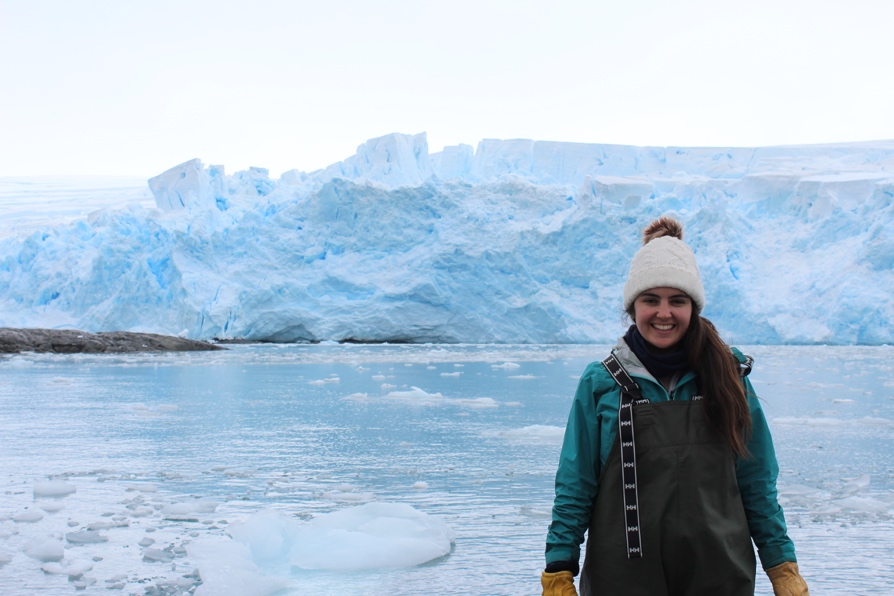While my brothers played with our Nintendo Game Boy, I was tinkering around with my dad’s graphing calculator looking for patterns in how I added and multiplied numbers together… and that’s when I knew that math and science were going to be part of my life. In High School I was fortunate to encounter many encouraging teachers and my love of math and physics folded into my curiosity of how the living world worked. Armed with a passion for sustainability and probably a little too much to say, I left my hometown in Massachusetts to earn my B.S. in Biophysics in the nation’s capital at George Washington University.

At George Washington (GW), I learned how to use math and physics to solve complex biological problems. I spent a few summers as an antibody production intern at Cell Signaling Technology and a few academic years in GW’s Microbiology, Immunology, and Tropical Medicine labs. As interesting as this work was, I was itching to get out of the mouse room. I took a summer job as a trail guide for a wilderness adventure camp in northern Maine and returned to Washington DC with a determination to apply my Biophysics curriculum to large natural ecosystems. This is when I joined Dr. Gedan’s Coastal Ecology lab and conducted my senior thesis on osmotic and ionic tolerances of germinating crop seeds that are likely to see increased saltwater intrusion due to sea level rise. Turns out, there’s a lot of physics in the way plants grow! And the way oceans move.

For my graduate work, I wanted to dive deeper into coastal oceanography. I was lucky enough to join the Rutgers University Center for Ocean Observing Leadership in the fall of 2019 under the advisory of Dr. Josh Kohut. My dissertation work investigates the role of coastal currents in the transport and concentration of small plants and animals known as plankton. These concentrations of plankton could increase prey availability for larger marine animals and may be a key factor in the creation and maintenance of biological hotspots. Josh and I have been calling these concentrations of plankton “marine grocery stores”. I have been quantifying this coastal ocean transport by applying several different Lagrangian Coherent Structure calculations to surface currents observed by High Frequency Radars and regional models, first in search of marine grocery stores in Palmer Deep, Antarctica and next in the Mid Atlantic Bight.

Along this road that science has brought me down, I have discovered a love for teaching and effectively communicating science. In the classroom, I have been known to say things like “math isn’t scary!” and “Python is your friend!”- all kidding aside, I hope that these sentiments resonate with students and empower them to use math and physics as tools to understand our natural world! Outside of the classroom, I have shared ideas about marine grocery stores to classrooms, libraries, short pitch competitions, and fishing groups. I have also found great friends at Rutgers, and am looking forward to another year as part of the Oceanography Graduate Student Association and our Dungeons and Dragons campaign.
When I’m not working, you can find me backpacking, kayaking, water skiing, or admiring some good trees with friends and family. You may also run into me with Rutgers Adventure Recreation where I lead beginner outdoor adventure trips for students and compete on a log rolling team.

